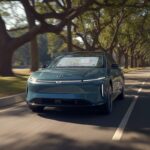
When you look at a self‑driving car navigating the road it often looks slick, seamless, effortless.
But behind the scenes of any operation of a vehicle with autonomy lies countless hours of invisible work: calibration, scenario‑engineering, safety frameworks, edge‑case hunting, domain adaptation, continual learning.
In this blog post we’ll pull back the curtain and explore high‑level insights and rarely discussed techniques that power the real world of autonomy.
The invisible foundations: what’s going on behind the scenes
At the outset, the public sees sensors, cameras, lidar, radar and compute.
But the real‑world roll‑out of autonomous driving involves so much more: validation environments, data engineering pipelines, edge‑case libraries, fleet orchestration, software modularity, domain generalisation, and operational safety cases.
For example, the research into edge‑case detection shows that documenting and analyzing rare and unusual scenarios has become a major part of AV system design. datavlab.ai+3arXiv+3MDPI+3
So what are some of these rarely discussed techniques that are foundational but seldom highlighted?
Rarely discussed technique #1: Scenario‑based testing and parametric scenario generation
One of the high‑level methods behind progression in autonomy is scenario‑based testing: instead of relying purely on millions of miles driven, engineers define logical scenarios (parameter ranges, distributions) and then sample concrete scenarios (specific parameter instantiations) for testing.
For example, a recent paper introduces a method where driving data is used to build a parametric representation of scenarios and then simulation combined with reinforcement learning is used to generate edge‑cases. MDPI+1
This technique is rarely mentioned outside technical circles, but it is crucial: you can generate rare but critical conditions computationally rather than wait for them to happen naturally.
It allows more efficient validation and discovery of failure modes.
Rarely discussed technique #2: Domain generalisation and transfer learning across geographies/use‑cases
Another behind‑the‑scenes insight is that systems trained in one city, one map, one weather condition often falter in a different region or scenario.
This hidden reality requires techniques like transfer learning, domain adaptation, and systematic simulation of unfamiliar environments.
For instance, research shows that simulation data can be used to simulate accidents and then models fine‑tuned to real‑world data for better generalisation. arXiv+1
High‑level insight: autonomous driving isn’t just about building a model for one environment—it’s about designing for many environments, many edge‑cases, many domains—and building the ability to transfer and adapt rather than rewrite.
Rarely discussed technique #3: Safety case frameworks, verification & validation pipelines
While sensors and algorithms attract the headlines, much of deployment hinges on building safety case frameworks: documentation and evidence that the system can handle failures, meets regulatory and operational standards, and can degrade gracefully.
Research into edge case detection underscores the challenge of rare events: they are “situations on the border between safe and unsafe.” arXiv
These frameworks require large infrastructure of logging, monitoring, simulation, redundancy, system‑of‑systems thinking.
This is behind the scenes, rarely glamorised, but absolutely essential for real‑world deployment of autonomy.
High‑level insight #1: Scaling data & compute follow power‑law behavior
A recent study by Waymo shows that performance in some autonomous driving tasks (motion forecasting, planning) follows scaling laws: more data, more compute, better performance in predictable ways. Waymo
What this means behind the scenes is that millions of driving hours, massive simulation volumes, extensive compute investment are not just nice to have—they underpin incremental but predictable improvement.
Organisations building autonomy must plan for data/compute scaling as a strategic asset.
High‑level insight #2: Modular software stacks and continuous over‑the‑air upgrades
Another big‑picture insight: as vehicles become more software‑defined, the stack is no longer “set it and forget it”.
Instead, it is modular, upgradable, continuously improved.
Behind the scenes teams build modules for perception, prediction, planning, control, simulation; they separate these so upgrades can occur individually, hardware can change, geographies can change, without rewriting the entire system.
This rarely shows up in public product announcements, but insiders treat it as a key competitive edge.
Bringing those insights into actionable steps
If you’re in the mobility business or an innovation team looking at autonomous driving, here are steps you can take grounded in these behind‑the‑scenes, high‑level techniques:
-
Map your scenario‑library: identify potential rare or unusual driving conditions (weather, infrastructure anomalies, contraventions) and build parametric representations.
-
Build a domain‑adaptation plan: design your model and system to adapt to new geographies or use‑cases rather than assuming one fit.
-
Establish your verification & validation pipeline: incorporate scenario‑based testing, edge‑case generation, simulation analytics, logging of unusual events, safety‑case documentation.
-
Invest in data / compute scaling: recognise that incremental improvement may require large volumes and infrastructure; plan accordingly rather than assuming marginal cost.
-
Design your software stack as modular and upgradeable: separate perception/prediction/planning/control, enable over‑the‑air updates, support multi‑vehicle/fleet learning.
-
Prioritise continuous learning: once deployed, collect data from real‑world operations, feedback into your simulation/test loops, refine modules, cover new edge‑cases.
Why these behind‑the‑scenes things matter
Because when you see a self‑driving vehicle successfully navigate a tricky intersection, what you don’t see is all the training data, the fail‑case logs, the simulation hours, the software updates, the fleet orchestrations, the safety‑case work.
Neglecting those unseen layers means your system may look good in controlled tests but fail in the wild.
By focusing not only on the visible “let the car drive itself” piece but also on these hidden foundations, you build robustness, you build trust, you build scale.
Autonomous driving is not just a hardware problem or a vision problem.
It is a systems engineering problem, a data‑engineering problem, a software‑evolution problem, a domain‑generalization problem, a safety case problem.
Many of the winning efforts will be won behind the scenes.


